Weightlifting is an incredible way to build strength, increase muscle mass, and improve overall fitness. However, like any physical activity, it comes with its own set of risks, particularly to the wrists. The wrists are pivotal in almost every lifting movement, making them susceptible to injury if not properly cared for. To avoid wrist injury while lifting weights, it is crucial to adopt proper techniques, engage in wrist-strengthening exercises, and be aware of how the wrists function under strain.
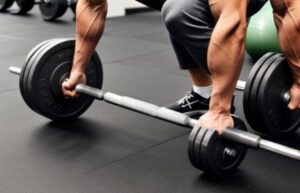
Understanding Wrist Anatomy
Basic Structure of the Wrist
The wrist is a complex joint made up of eight small bones known as carpal bones, which are arranged in two rows. These bones connect the hand to the forearm and work together to allow a wide range of motion, including flexion, extension, and rotational movements. Ligaments hold the carpal bones together and stabilize the joint, while tendons attach muscles to the bones, facilitating movement. Understanding this intricate structure is essential for preventing injuries, as improper use can easily lead to strain or damage.
How the Wrist Functions During Lifting
During weightlifting, the wrists serve as a critical point of support and stabilization. Whether you’re pressing, pulling, or lifting, the wrists help transfer force from the hands to the arms, and then to the rest of the body. This makes them particularly vulnerable to injury if they are not properly aligned or if excessive pressure is applied. For example, when performing exercises like bench presses or deadlifts, maintaining a neutral wrist position is key to distributing the load evenly and avoiding strain on the tendons and ligaments.
Common Wrist Injuries from Weightlifting
Types of Wrist Injuries
Several types of wrist injuries can occur during weightlifting, ranging from mild strains to more severe conditions:
-
Sprains: Ligament injuries caused by overstretching or tearing.
-
Tendinitis: Inflammation of the tendons, often due to overuse.
-
Carpal Tunnel Syndrome: Compression of the median nerve within the wrist, leading to pain and numbness.
-
Fractures: Breaks in one or more of the carpal bones, usually resulting from a fall or impact.

Symptoms of Wrist Injuries
Recognizing the symptoms of wrist injuries early can prevent them from becoming more serious. Common symptoms include:
-
Pain: A dull ache or sharp pain in the wrist, often worsened by movement.
-
Swelling: Visible swelling around the wrist joint.
-
Weakness: Difficulty gripping objects or performing lifting movements.
-
Numbness: A tingling or numb sensation, particularly in the fingers.
If you experience any of these symptoms, it’s important to address them promptly to avoid further damage.
Causes of Wrist Injuries While Lifting
Poor Form and Technique
One of the most common causes of wrist injuries in weightlifting is poor form. When lifting weights, it’s easy to let the wrists bend or twist in unnatural ways, especially when fatigue sets in. This can place undue stress on the joints and lead to injuries over time. For instance, allowing the wrists to hyperextend during a bench press can strain the ligaments and lead to a sprain.
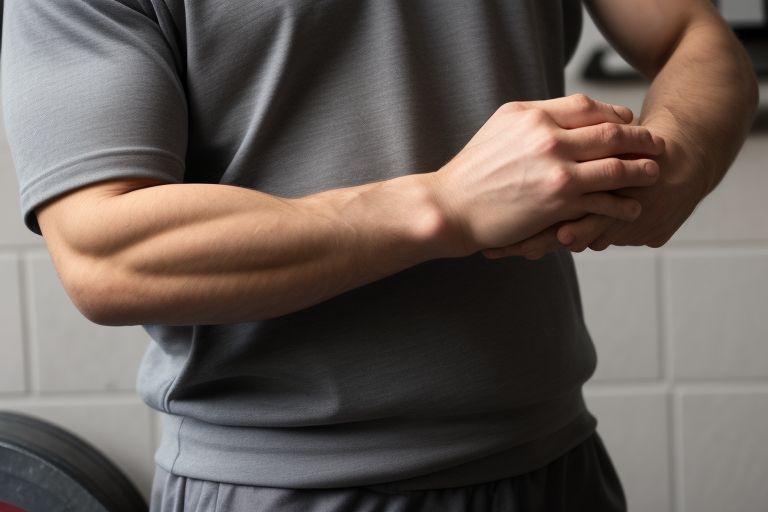
Overuse and Fatigue
Overuse is another significant contributor to wrist injuries. Repeatedly performing the same lifting movements without adequate rest can cause the tendons and ligaments in the wrist to become fatigued, increasing the risk of injury. This is particularly common among athletes who train frequently without allowing enough time for recovery.
Inappropriate Equipment
Using the wrong equipment can also lead to wrist injuries. For example, using weights that are too heavy for your current strength level can force your wrists into compromised positions. Additionally, poorly designed or ill-fitting gloves, grips, or wrist wraps can interfere with proper wrist alignment and increase the likelihood of injury.
The Importance of Proper Warm-Up
Dynamic Stretching for Wrists
Before lifting weights, it’s crucial to warm up your wrists with dynamic stretching. Unlike static stretches, which involve holding a position, dynamic stretches involve active movement, helping to increase blood flow and prepare the muscles and joints for exercise. Wrist circles, where you rotate your wrists in both directions and finger flexes, where you open and close your hands, are excellent dynamic stretches for the wrists.
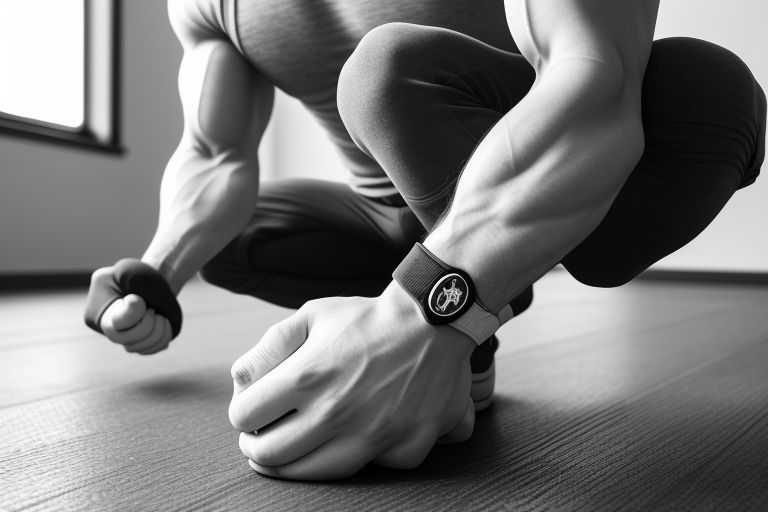
Wrist-Specific Warm-Up Exercises
In addition to general warm-up exercises, specific wrist exercises can further prepare the joints for lifting. Wrist flexor and extensor stretches are particularly effective. To perform a wrist flexor stretch, extend your arm in front of you with the palm facing up, then gently pull your fingers back with your other hand until you feel a stretch in the forearm. Hold for 15-20 seconds and repeat on the other side. For a wrist extensor stretch, follow the same steps but with the palm facing down.
Correct Lifting Techniques
Maintaining a Neutral Wrist Position
One of the most important techniques to avoid wrist injury while lifting weights is maintaining a neutral wrist position. This means keeping your wrists in line with your forearms, neither bent backward nor forward. A neutral position helps distribute the weight evenly across the wrist joint, reducing the risk of strain. This is especially important in exercises like bench presses, where the temptation to let the wrists bend backward can be strong.
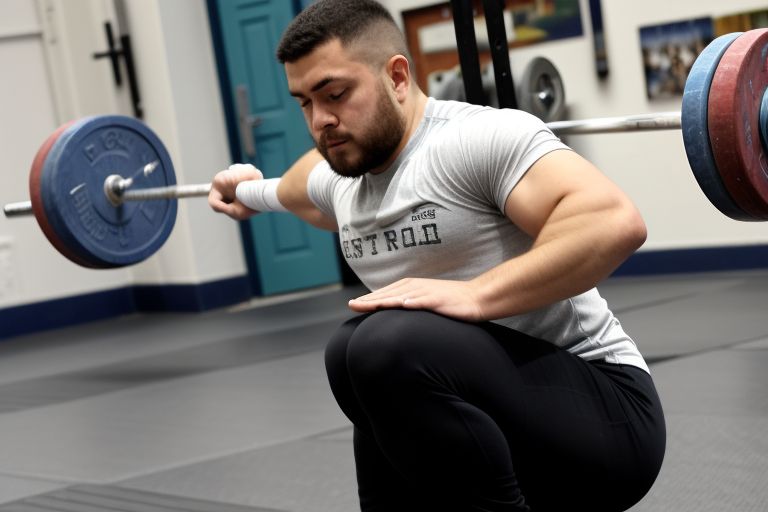
Proper Grip Techniques
The way you grip the barbell or dumbbells can also impact your wrist health. A grip that is too tight can cause unnecessary tension in the wrists, while a grip that is too loose can lead to instability. Aim for a firm yet relaxed grip, ensuring that the weight is evenly distributed across your hands. For exercises like deadlifts, using a mixed grip (one hand overhand, the other underhand) can help maintain a more secure hold and reduce wrist strain.
Avoiding Hyperextension
Hyperextension of the wrist occurs when the wrist bends backward beyond its normal range of motion, which can lead to ligament damage or sprains. To avoid hyperextension, be mindful of your wrist position during exercises. If you find it difficult to maintain proper alignment, consider using wrist wraps or reducing the weight until you can lift without compromising your form.
Wrist Strengthening Exercises
Resistance Band Exercises
Incorporating resistance band exercises into your routine can help strengthen the muscles around the wrist, providing better support during lifting. One effective exercise is wrist flexion and extension with a resistance band. Attach one end of the band to a stable surface and hold the other end in your hand. With your forearm resting on a flat surface and your palm facing up, slowly flex and extend your wrist against the resistance of the band.

Dumbbell and Barbell Wrist Curls
Wrist curls with dumbbells or barbells are classic exercises for building wrist strength. For wrist curls, sit on a bench with your forearms resting on your thighs and your palms facing up, holding a dumbbell in each hand. Curl your wrists upwards, lifting the dumbbells, then slowly lower them back down. Reverse the position (palms facing down) to target the wrist extensors.
Flexion and Extension Exercises
Flexion and extension exercises target the muscles on both sides of the wrist. To perform wrist flexion exercises, hold a dumbbell with your palm facing up and curl your wrist upward. For wrist extension, hold the dumbbell with your palm facing down and lift your hand upward. These exercises can be done seated, with your forearm supported on your thigh or a bench.
Using Wrist Supports and Wraps
When to Use Wrist Wraps
Wrist wraps can be a valuable tool for preventing wrist injuries, especially during heavy lifting. They provide additional support to the wrist joint, reducing the risk of hyperextension and helping to maintain proper alignment. However, they should not be relied upon as a substitute for proper form. Use wrist wraps during heavy lifts or when your wrists feel fatigued, but ensure that you are still focusing on maintaining a neutral wrist position.
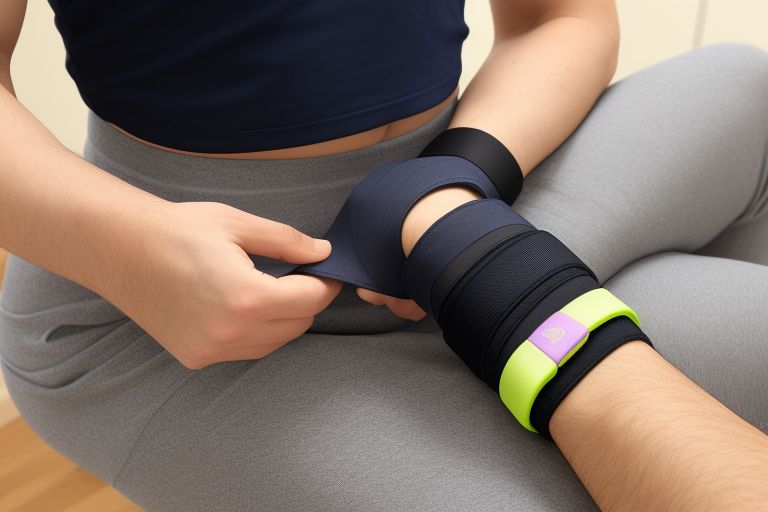
Choosing the Right Type of Wrist Support
Not all wrist supports are created equal. When selecting wrist wraps or supports, consider the level of stiffness and adjustability. Stiffer wraps provide more support but may restrict movement, making them better suited for powerlifting. More flexible wraps offer less support but allow for greater mobility, making them ideal for exercises that require a full range of motion. Ensure that your wrist supports are comfortable and fit well, as ill-fitting wraps can do more harm than good.
The Role of Rest and Recovery
Importance of Rest Days
Rest is a crucial component of any fitness regimen, especially when it comes to injury prevention. Overworking your wrists without adequate rest can lead to overuse injuries, such as tendinitis. Ensure that you incorporate rest days into your training schedule to allow your wrists, and the rest of your body, time to recover. Rest days don’t necessarily mean complete inactivity; light, low-impact activities like walking or yoga can help maintain fitness levels without putting undue stress on the wrists.
Managing Wrist Fatigue
Wrist fatigue can be a warning sign that your wrists need more rest. If you notice that your wrists are feeling unusually tired or weak during or after lifting sessions, it’s important to take action. Reducing the intensity of your workouts, focusing on wrist-strengthening exercises, and ensuring adequate recovery time can help manage wrist fatigue and prevent injuries. Additionally, consider adjusting your lifting routine to avoid repetitive movements that could exacerbate fatigue.
Listening to Your Body
Recognizing Early Signs of Injury
Your body often gives you warning signs before a serious injury occurs. Pay attention to any discomfort or pain in your wrists, especially if it persists or worsens over time. Early signs of wrist injury may include a dull ache, stiffness, or a tingling sensation. Don’t ignore these symptoms, as they can indicate that your wrists are under too much strain. Addressing these early signs can prevent more severe injuries and keep you lifting safely.
Adapting Your Workout Routine
If you start to notice wrist pain or discomfort, it may be necessary to adapt your workout routine. This could mean reducing the weight you’re lifting, adjusting your grip, or incorporating more rest days. It’s also important to focus on proper form and technique to ensure that your wrists are not being compromised during your workouts. Remember, it’s better to lift lighter weights with good form than to risk injury by pushing through pain.
Common Mistakes to Avoid
Overloading Weights
One of the most common mistakes that lead to wrist injuries is lifting weights that are too heavy. When the weight is too heavy, it’s easy for the wrists to become misaligned, leading to strain or injury. To avoid this, always start with a manageable weight and gradually increase the load as your strength improves. Prioritize proper form over lifting heavier weights, as this will help protect your wrists and ensure long-term progress.
Ignoring Pain or Discomfort
Another mistake is ignoring pain or discomfort in the wrists. Many lifters push through pain, thinking it’s just part of the process, but this can lead to serious injuries. If you experience pain in your wrists, stop lifting and assess the situation. Continuing to lift despite pain can exacerbate the issue and result in a more significant injury that could sideline you from training for weeks or even months.
Modifying Workouts for Wrist Health
Alternative Exercises for Wrist Relief
If your wrists are prone to injury or you’re recovering from a wrist issue, consider modifying your workouts to include exercises that place less strain on the wrists. For example, instead of traditional push-ups, try using push-up bars or performing knuckle push-ups, which keep the wrists in a neutral position. Alternatively, exercises like the chest press machine can be used to reduce the load on the wrists compared to free weights.
Using Machines vs. Free Weights
Machines can be a useful alternative to free weights for those with wrist issues. Machines often allow for more controlled movements and can help ensure proper form, reducing the risk of wrist injury. For example, a Smith machine can provide additional stability during presses, while cable machines allow for a more controlled range of motion. However, it’s still important to use proper form and not rely solely on machines, as they do not engage stabilizing muscles to the same extent as free weights.
Incorporating Flexibility Training
Stretching Exercises for Wrist Mobility
Flexibility training is essential for maintaining wrist health and preventing injuries. Regularly stretching the wrists can help improve their range of motion and reduce stiffness. Simple stretches, such as extending your arm in front of you and gently pulling back on your fingers, can help maintain flexibility. Incorporating wrist stretches into your daily routine, particularly before and after lifting, can help keep your wrists limber and reduce the risk of injury.
Importance of Flexibility in Injury Prevention
Flexibility plays a crucial role in injury prevention by allowing the joints to move through their full range of motion without strain. Without adequate flexibility, the wrist joints and surrounding muscles are more likely to become tight and overworked, leading to injuries. Flexibility training should be a regular part of your fitness routine, not only for your wrists but for your entire body, to ensure balanced, injury-free training.
Nutrition and Hydration for Joint Health
Essential Nutrients for Joint and Bone Health
Nutrition plays a vital role in maintaining healthy joints, including the wrists. Consuming a diet rich in essential nutrients like calcium, vitamin D, and omega-3 fatty acids can help support joint and bone health. Calcium and vitamin D are crucial for maintaining strong bones, while omega-3s have anti-inflammatory properties that can help reduce the risk of joint pain and injury. Including foods like dairy products, leafy greens, fatty fish, and nuts in your diet can help ensure your joints remain healthy and resilient.
Staying Hydrated During Workouts
Hydration is another key factor in joint health. Staying adequately hydrated helps maintain the lubrication of your joints, reducing friction and the likelihood of injury. Dehydration can lead to joint stiffness and increase the risk of injury, so it’s important to drink plenty of water before, during, and after your workouts. Aim to drink at least 8-10 glasses of water per day, and more if you’re engaging in intense physical activity.
When to Seek Professional Help
Consulting a Physiotherapist
If you’re experiencing persistent wrist pain or discomfort, it may be time to consult a physiotherapist. A physiotherapist can assess your condition, identify any underlying issues, and create a customized treatment plan to help you recover and prevent future injuries. They can also provide guidance on proper lifting techniques and recommend specific exercises to strengthen your wrists.
When to See a Doctor for Wrist Pain
In some cases, wrist pain may indicate a more serious condition that requires medical attention. If you experience severe pain, swelling, or if your wrist is unable to bear weight, it’s important to see a doctor. Conditions like fractures, severe sprains, or carpal tunnel syndrome may require professional treatment, including imaging tests or surgery, to ensure proper healing.
Frequently Asked Questions
How can I tell if my wrist pain is serious?
If your wrist pain is accompanied by significant swelling, numbness, or an inability to move your wrist, it could be a sign of a serious injury like a fracture or severe sprain. Persistent pain that doesn’t improve with rest may also indicate a more serious condition. In such cases, it’s important to consult a healthcare professional for a proper diagnosis.
Can wrist wraps prevent injuries?
Wrist wraps can help prevent injuries by providing additional support and stabilizing the wrist joint during heavy lifts. However, they should be used as a supplement to, not a replacement for, proper form and technique. Over-reliance on wrist wraps without addressing underlying weaknesses or poor form can still lead to injury.
Should I stop lifting weights if my wrist hurts?
If you experience wrist pain while lifting weights, it’s important to stop and assess the cause. Continuing to lift with wrist pain can worsen the injury and prolong recovery time. Resting and allowing your wrist to heal is crucial. You may also need to modify your exercises or reduce the weight until the pain subsides.
What are the best exercises to strengthen wrists?
Some of the best exercises for strengthening wrists include wrist curls, reverse wrist curls, and resistance band exercises. These exercises target the muscles around the wrist, improving strength and stability, which can help prevent injuries.
How do I maintain wrist flexibility?
To maintain wrist flexibility, incorporate regular stretching exercises into your routine. Wrist circles, flexors, and extensor stretches are effective ways to keep your wrists limber. Stretching before and after workouts can also help reduce stiffness and prevent injuries.
Can bad form really cause wrist injuries?
Yes, bad form is one of the leading causes of wrist injuries in weightlifting. Improper wrist alignment, overextending the wrist, or using a grip that’s too tight can all place excessive strain on the wrists, leading to injuries. It’s essential to focus on maintaining proper form to protect your wrists.
Preventing wrist injuries while lifting weights is crucial for maintaining long-term fitness and avoiding setbacks. By understanding the anatomy of the wrist, using proper techniques, incorporating wrist-strengthening exercises, and listening to your body, you can significantly reduce the risk of injury. Always prioritize form over the amount of weight lifted, and don’t hesitate to seek professional advice if you experience persistent pain. With the right approach, you can enjoy the benefits of weightlifting without compromising your wrist health.
Thank You for Visiting our website mhnrc.org. If you liked the article, then share it with others.


